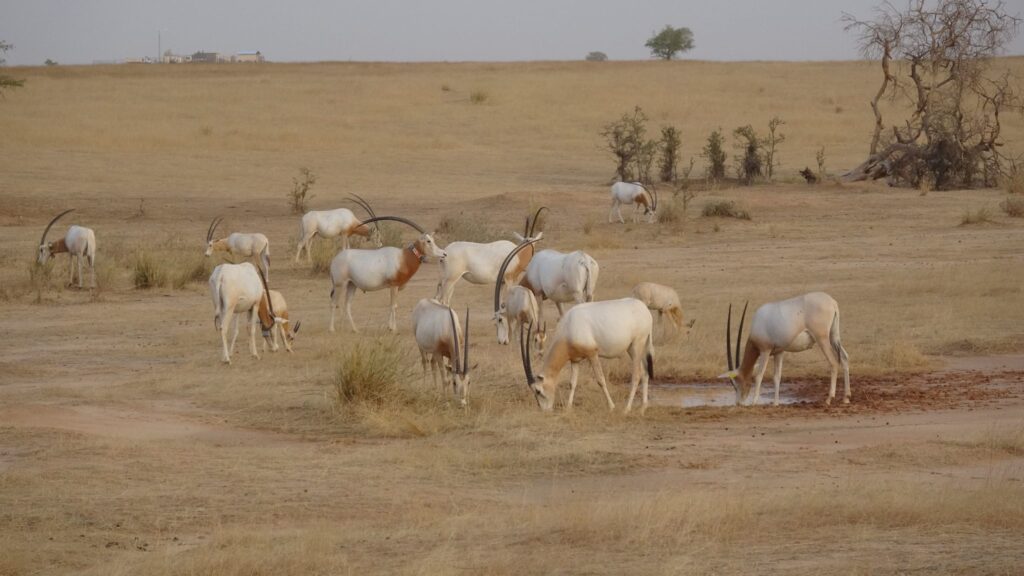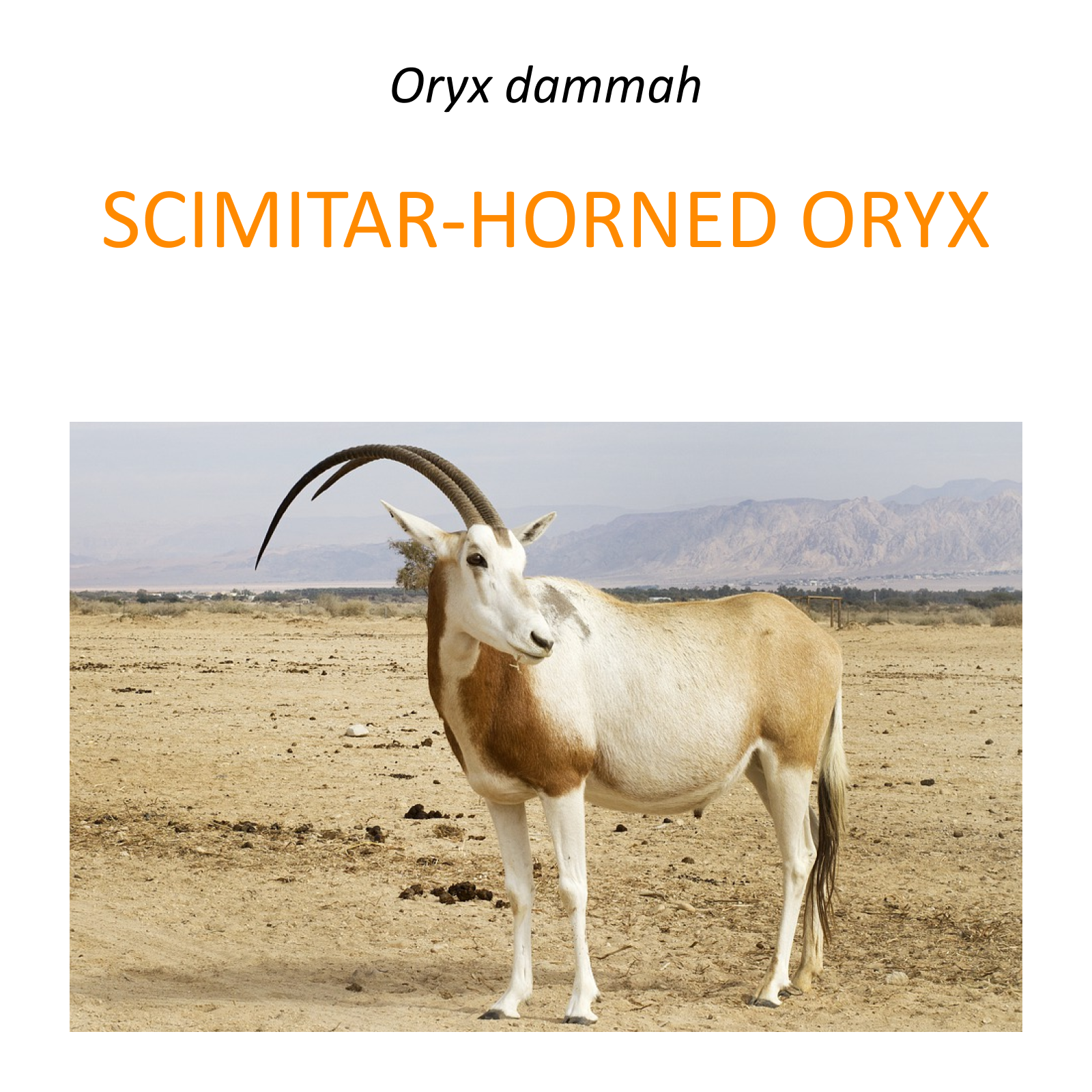Description
The scimitar-horned oryx (Oryx dammah) was first described 190 years ago, in 1826 and in 2000 it was classified as extinct in the wild (IUCN category EW). The last, wild scimitar-horned oryx was killed for a trophy – for its horns…
Before the Europeans conquered Africa, the scimitar-horned oryx was a common species in the semi-arid and desert areas of North Africa. For centuries, they were part of the environment that enabled the indigenous people to survive. However, they used them to a limited extent, thanks to which the oryx population was kept at a constant level. Only the fashion for hunting for trophies brought doom to these antelopes. One of the characteristic features of oryx are 1.2 m long, scimitar-like bent horns, which have become the object of desire of hunters mainly from Europe and America.
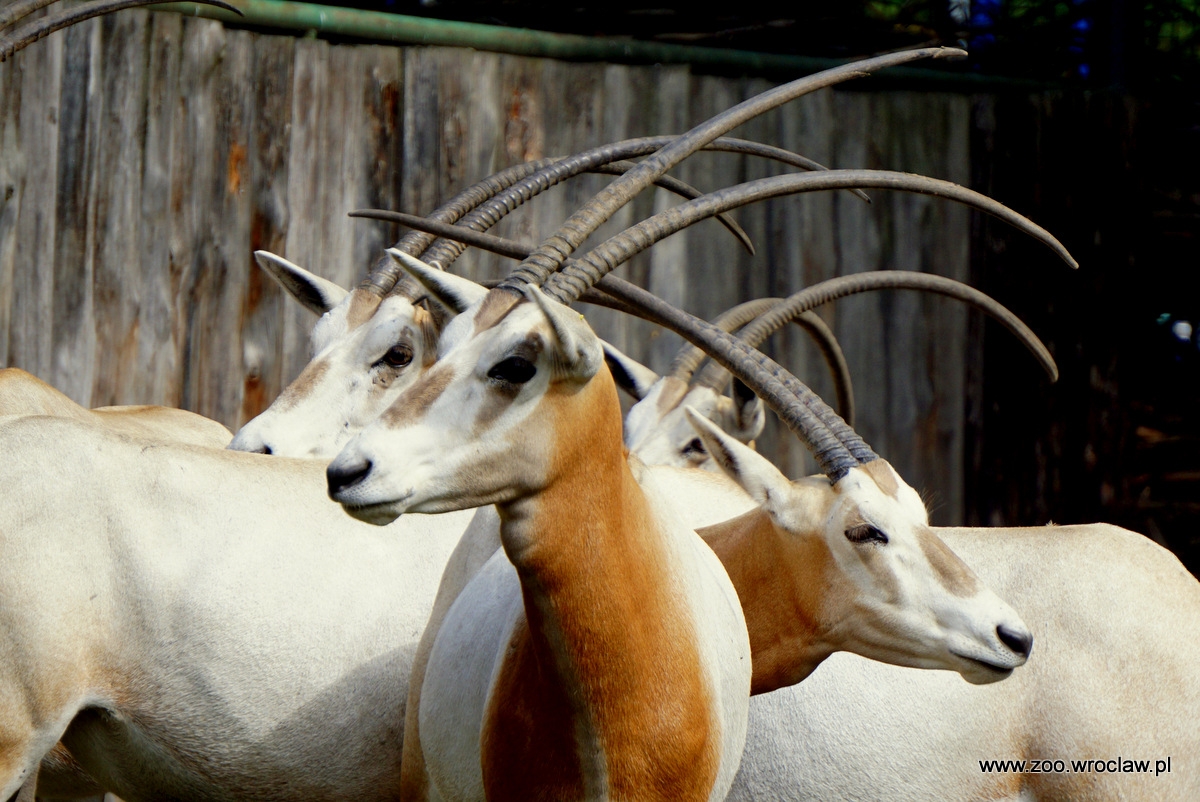
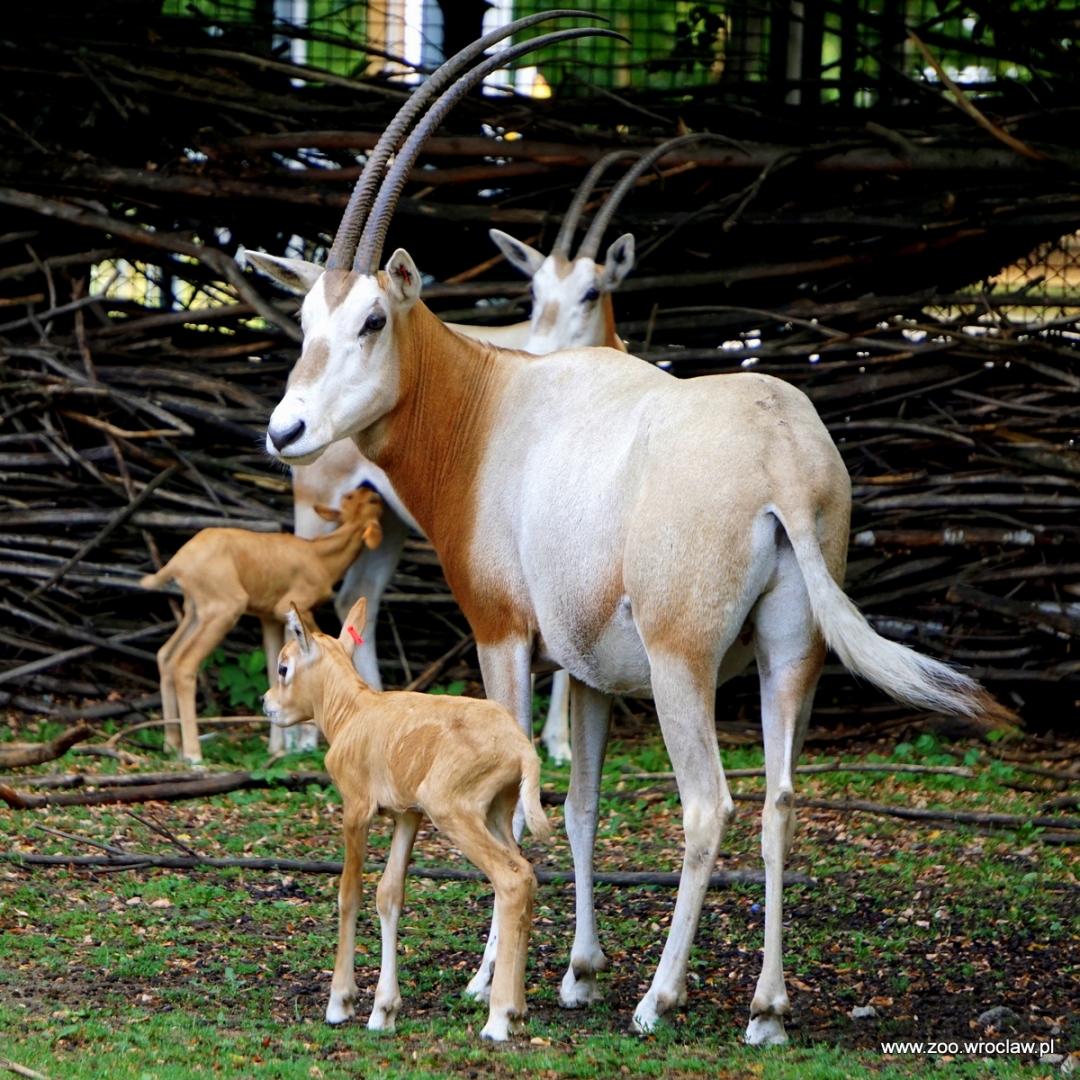
However, beyond the horns, the oryx has many more advantages that nature has endowed it with and that allow it to survive in the extreme conditions. Few people know that it is better adapted to a water-poor environment than most animal species, including the camel. A camel can do without water for about two weeks, oryx even several times longer. This is due to two adaptive features – the ability to control kidney function and regulate body temperature, which can rise up to 46 degrees Celsius.
The scimitar-horned oryx is almost entirely white with a rusty brown neck and rump. It reaches a height of about 1.2 m at the shoulder. It feeds on foliage, grass, succulent plants and plant parts.
It lives in herds of several individuals of both sexes. After about eight months of pregnancy, the female gives birth to only one young.
The species survived thanks to private Arabian sheikh farms and zoos around the world. The struggle to save this species has been going on for almost 20 years. In Africa, reintroduction is carried out. The oryx was released in four protected areas in Tunisia and one in Senegal. There is also an ambitious project to restore the species to Ouadi-Rimé-Ouadi Achim Faunal Reserve in Chad run by the Sahara Conservation Fund, the Environmental Protection Agency – Abu Dhabi and the government of Chad.
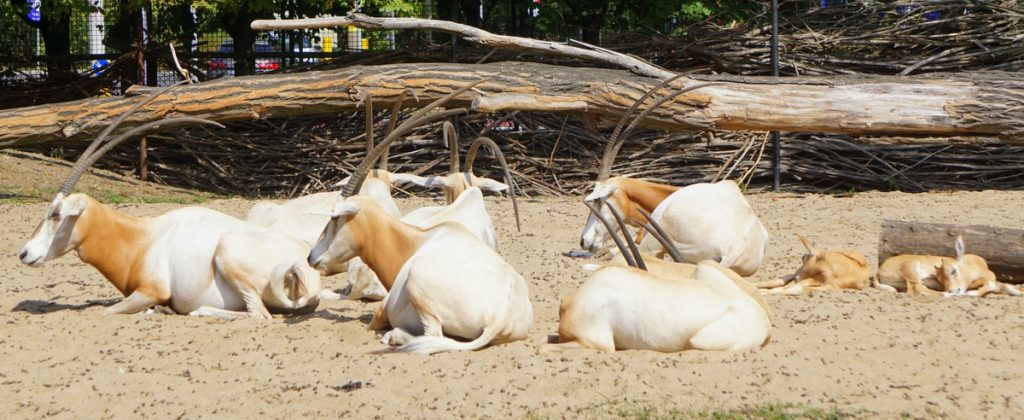
What we do
We financially support Marwell Wildlife, a charity at Marwell Zoo in the UK that runs a zoo scimitar-horned oryx breeding program and a reintroduction project in Tunisia. Thanks to their efforts, there are now around 200 zoo-born oryx living in protected areas in Tunisia.

The reintroductions began in 1985 with 10 oryx from Marwell and Edinburgh Zoo (co-ordinated by ZSL). These were released into Bou-Hedma National Park. In 1999 and 2007, Marwell co-ordinated the release of the scimitar-horned oryx from various European collections into different protected areas in Tunisia. Reintroductions involve various organisations, are costly, complex and require a lot of expertise along with global collaboration.
Reintrodukcja jest bardzo kosztownym i złożonym procesem, wymagającym ścisłej współpracy wielu organizacji, konieczna jest duża wiedza i globalna współpraca.
Since the first release of scimitar-horned oryx in Tunisia’s Bou-Hedma National Park in 1985, and the subsequent Djerba Declaration in 1998, Marwell Wildlife has collaborated in a long-term partnership with the Tunisian Direction Générale des Forêts (DGF) to restore antelopes and their arid ecosystems in Tunisia.
Now their actions focus on the management of the Tunisian meta-population of scimitar-horned oryx, addressing questions that affect their long-term viability and how to sustain these herds within the available habitat. This includes ongoing monitoring of animal health, oryx population performance and the wider environment, while carrying out research on the ecology and genetics of reintroduced herds.
